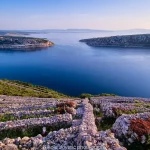Last year, over 1,780 annual hunting IDs were issued abroad by the Istria County Hunting Association, mostly to Italian hunters.
Istria County is the most successful destination for hunting tourism, which has been confirmed by the president of the Hunting Association of Istria County, Graciano Prekalj. Over the past year, 1,780 hunting IDs worth 400 kuna were issued through the County Hunting Association for foreign, mostly Italian hunters, while about 7,400 of such IDs were issued annually in Croatia, reports Glas Istre on February 9, 2019.
Foreign hunters must be accompanied by domestic hunters from the societies they are registered within and reserve hunting days. The hunting association grants them the right to kill a certain number of game depending on the hunting-economical basis, through a number of hunting days, i.e., outings on the hunting grounds, which they pay for.
It is estimated that every foreign hunter who comes to Istria annually spends 2,500 euro on average, multiplied by the 1,780 hunting IDs sold annually by Istria to foreign hunters, which leads to annual revenue of 4.5 million euro from hunting tourism. This includes the costs of accommodation and food, as well as what hunters spend on fuel, entertainment, and other needs during their stay in Istria.
The most significant cost is accommodation and meals. Most foreign hunters, as a rule in Istria, come for two to three days to hunt small game, and most of them, estimated at 95 percent, hunt woodcocks.
“Woodcocks stop in Istria on their voyages from northern Siberia to northern Africa and back. Interestingly, it is a species that has the exact established places it stays. It is adapted to the current climate conditions.
If we are having a rough winter and the soil is frozen on Ćićarija, then they’ll go to the coastal parts of Istria because they have a long beak and feeds on small insects under the leaves, and in the ground, so if the soil is frozen, then they cannot eat,” says Prekalj.
All 38 hunting societies in Istria County are included in hunting tourism. Foreign hunters are the most frequent guests from November to February, but this depends on weather conditions. They usually stay in accommodation where they can take care of their dogs, and where they sleep depends on whether the renters have room for their dogs.
Although the County Hunting Association estimates that Istria leads in hunting tourism, Prekalj says there is still room for improvement.
“When we credited thousands of annual ID cards, it seemed like it was a very large number, so we reached 1,500, and now we are at almost 1,800, but there is still room for more in hunting tourism. However, foreign hunters still come exclusively for hunting, of course, this includes accommodation and food. Most of them are good consumers and enjoy the local gastronomic offer. It is important for them to stay as close as possible to the hunting ground so that they do not have to travel 30, 40 kilometers,” says Prekalj.
He adds that, in terms of branding the destination, there is certainly room for hunting tourism, but points out the fact that hunting societies each individually conduct their policy of negotiating with foreign hunters, although foreign hunters are more or less well informed.
To read more about travel in Croatia, follow TCN’s dedicated page.








